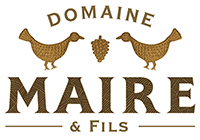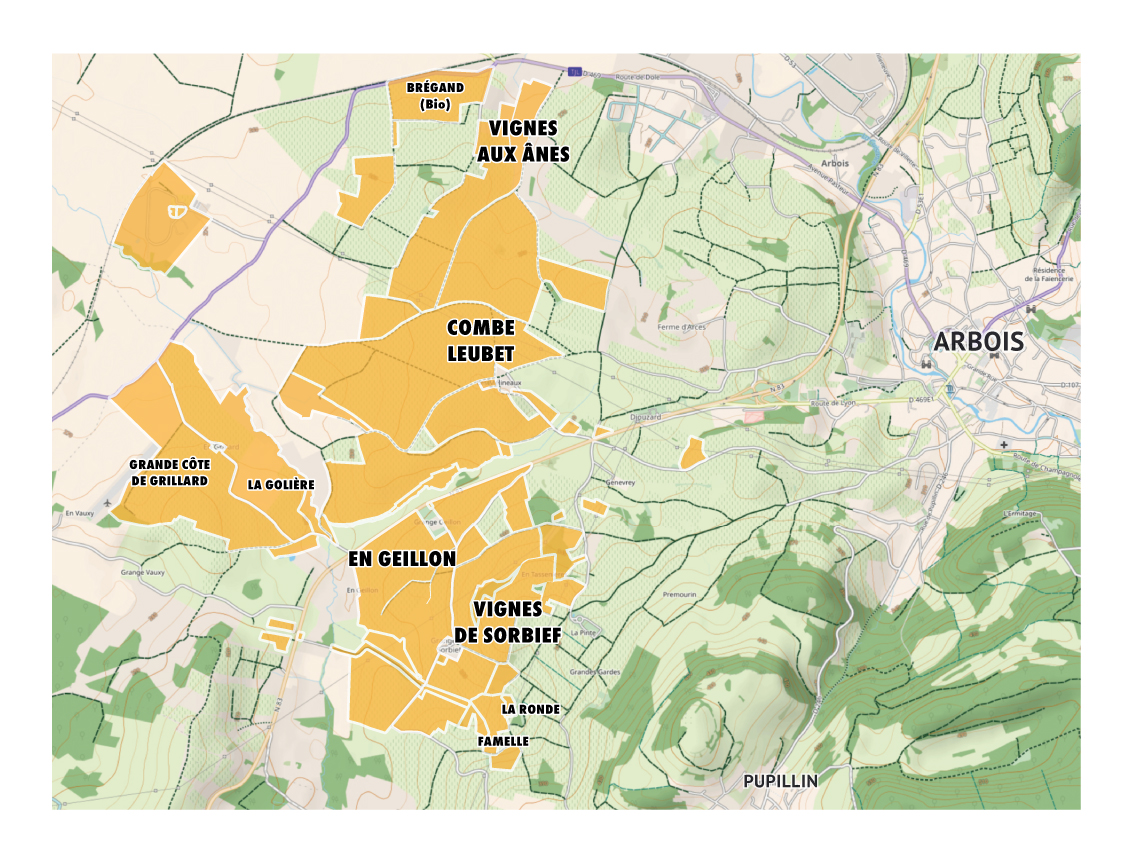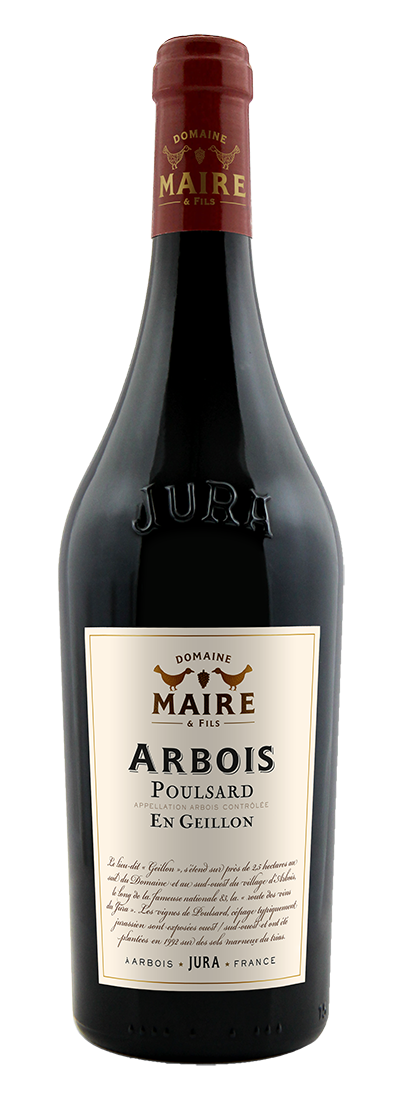ARBOIS POULSARD EN GEILLON 2020

The Poulsard, an old native grape variety, also known as Ploussard, appreciates strong soils, with marl and clay.
The nose offers aromas of small red fruits and fine notes of spices.
The mouth is elegant, generous with some wildness and underwood notes.
The Arbois AOC is the oldest and largest of the Jura's four geographic AOCs. In particular, it was France's first AOC (created in 1937).
Its name originates in the Celtic words "ar" and "bois" that would mean "fertile land".
In order to create this harmonious Arbois Poulsard, we identified and selected one of the best plot adapted to this grape variety in the historical family Maire’s estate: The “En Geillon” parcel located in the south of the Domaine and to the southwest of the Arbois village along the famous “Route des vins du Jura” (the Jura wine road) RN 83:
- Surface: 2,43 Ha
- West and North West exposure
- Average age of vines : 26 years ( 1992 )
- Soils: marls from the Triassic period
The work in the vines, is based on the respect of the nature and the soil. For young vines, located on steep slopes, to avoid erosion, we cultivate a row out of two, practice soil reassembly to aerate the lands subjected to settlement due to moisture, and grass with plants. Such as clover, which, by competing on the vine, can modulate its mineral and water supply and control its vigour and yield.
The Guyot double size is necessary to better control its performance.
Reception of the manual harvest followed by a total maceration of 12 days in thermos-regulated stainless steel tanks. Then, regularly throughout the fermentation, incorporating some pumping and pigeage (punching).
At the moment of pressing, the press and drop juices are assembled and withdrawn for malolactic fermentation on fine lees. Ageing, partially in oak barrels, and the rest in tank, for 2-3 months allowing to keep the fruity and typical character of the grape.
Light filtration before bottling.
The current public health crisis has certainly marked this year’s harvest, which nonetheless has been able to go ahead!
We were slightly less affected in the Jura vineyards, by drought than other regions thanks to rain during the month of August. One of the main challenges with this very early harvest was to achieve both optimal ripeness and balance.
Harvest was spread over a month on this estate, which has 234 ha (578.22 ac) in production this year. The harvest was good thanks to the replanting and reorganizing carried out in the vineyard over the last five years.
Initial tastings, Jacques Hauller:
‘The Jura, now more than ever, can lay claim to being the sixth sub-region of Burgundy! It boasts citrusy Chardonnays with a distinct mineral quality despite the very ripe state of the grapes and fruity Pinot Noirs with ripe tannins.
Careful plot selection reveals the potential of our Vignes aux Anes Trousseau; Vignes de Sorbief Savagnin and Chardonnay; a new gem like the delicate, elegant Pinot Noir in Arbois-Pupillin in the locality called ‘La Ronde’, which has been planted alongside the largely-forgotten native variety, Petit Béclan, which produces lively, light red wines which are great for blending purposes; and last but not least, carefully-selected Chardonnay from the vines at Grange Grillard.’


